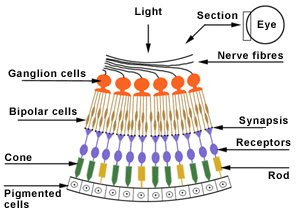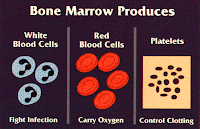Wednesday, May 14, 2008
Arteriol Blood Flow of the Kidney
The Renal Arteries then split off to Segmental Arteries.
The Segmental Arteries branch off into interlobar arteries which pass through the Renal Pyramids.
Each pyramid at the base of the interlobar arteries branch off to arcute arteries.
Off the Arcute Arteries are little interlobular arteries - they pass through the renal lobules.
They then enter the renal cortex and branch off to afferent arterioles. Each Nephron recieves one afferent arteriole which divide into a capillary network called the glomerulus.
Deep Inguinal Lymph Nodes
Superficial Inguinal Nodes
Axillary Nodes
Cervical Nodes
Metabolic Pathways
3 Metabolic pathways:
1. Occurs in the cytoplasm also known as Glycolysis. All organisms undergo glycolysis in all cells (animals, plants and bacteria). NADH.
2. occurs in mitochondrial matrix cytoplasm within the mitocondria. Only Eukaryotic cells have mitocondria. (Kreb's cycle, Citric Acid cycle, Tri-carboxylic acid (TCA)). NADH and FADH2.
3. Occurs in mitocondrial Cristae (inner membrane). ETS = Electron Transport System. All about the transfer of electrons. ATP.
Glucose is cut in half in Glycolysis.
Metabolism
Two types are Anabolic and Catabolic.
ATP = Nucleotide which makes it a nucliec acid. ATP is composed of a Phosphate, sugar and Nitrogen base (G,A,T,C, U)
When ATP turns into ADP there is a release of alot of energy.
ATP is the highest energy containing molecule.
When ADP goes to AMP energy is also released.
The definition of Energy is one reaction to another by transferring molecules from one to another.
Kinases - Phosphate group transfers from molecule A to Molecule B now molecule B is energized.
Polarity will drive it away (negative to positive)
Sunday, March 30, 2008
Fetal circulation/Cardiac Output
Cardiac output is the heart rate times the stroke volume. CO is the amount of blood (volume) pumped out by ventricles every 1 minute, which is about 5 to 6 liters. we have about 5 liters in our body so every minute our heart pumps all the blood in our bodies. Crazy!! The stroke volume is the blood being ejected from the ventricles.
Friday, March 21, 2008
The Heart


Saturday, March 15, 2008
Blood, Bone Marrow and Blood Types
In the picture below the blood cells look like cheerios....Dont they?
 I learned that blood is made up of Red Blood Cells - Erythrocytes, White Blood Cells - Leukocytes and Platelets - Thrombocytes. This was funny. The way to remember the 5 categories of white blood cells is this saying: never let monkeys eat banana's.
I learned that blood is made up of Red Blood Cells - Erythrocytes, White Blood Cells - Leukocytes and Platelets - Thrombocytes. This was funny. The way to remember the 5 categories of white blood cells is this saying: never let monkeys eat banana's.
N= Neurophils (70-80%) they are phagocytic cells which destroy foreign material and digest it
L= Lymphocytes (20-30%)
M= Monocytes (less than 10%) capable of many phagocytic events E= Eosinophil (3-8%) B= Basophil (less than 0.1%) releases Histamine, which is a blood vessel dilator

Bone marrow is found and is easily taken out of the flat bones in our body. The flat bones are the sternum, scapula's and the flat bone in the pelvis. The most common place for Red Bone marrow to be taken out is in the hips because there is less muscle and adipose tissue there.
BLOOD TYPES:
I just donated blood at the blood drive that was held here at EMCC. It was my very first time giving blood. I was not able to give too much because I started to think about it too much and was going to pass out. I can at least say that I did it and helped someone else. I do not know what type of blood that I have circulating in me. Which is should probably know. There are 4 types: A, B, AB and type Rh factor. It was interesting to see how it was possible to have a different blood type than a member of your family.
Sunday, March 9, 2008
Steriod Hormones
when we came back this week we talked about steriod hormones....
I really remember the estrogen hormone...cause well duh, I am a girl....lol
Estrogens diffuse easily across the cell membranes and when they are inside the cell body the interact with estrogen receptors.
Sex Hormones consist of androgens, estrogens & progestagens.
Corticosteriods consist of glucocorticiods and mineralcoritoids. Gluco controls metabolism & immune functions. Mineral controls blood volume.
Anabolic steriods increase bone and muscle synthesis.
steriod hormones are basically transported in the blood.
I will add more later....
Sunday, February 17, 2008
Eyes!!!

Now I also learned that rod and cone cells cannot regenerate, if they did no one would be blind.
Another cool thing is that the lens in our eye is held there by suspensory ligaments. Little tiny ligaments hold our lens in place. the human body is so amazing!!! It only gets better, We also have a canal of Shlem which is a tube inside the cilliary body which is constantly producing Aquias Humor. But oh no, the eye does not get filled with this liquid. It is reabsorbed because the eye is constantly producing more than it knows what to do with. Eevntually when you get old you might get Glacoma.
Towards the end of class the discussion of cGMP and GMP was disscused. cGMP keeps Na+ channels open. GMP keeps Na+ channels shut. The Cis-Retinal activates the g-protein which causes a subunit P and activates an enzyme called Adenylate Cyclase which generates GTP and turns it into cGMP and gluamate is released. Every portien has 3 subunits.
The last paragraph is kinda off, it is just what I had in my notes and I cannot remember much about it. If anyone can correct me please do! Have a good Vacation guys!
Friday, February 8, 2008
Peripheral nervous System

Then we talked about the Parasympathetic Nervous system and the Sympathetic Nervous system. The PNS is "feed and breed" and in a male is the cause of Erection. The SNS is "fight or flight" and is the cause of ejaculation in the male. . They both release Ach. Sympathetic is much more of a mass discharge.







